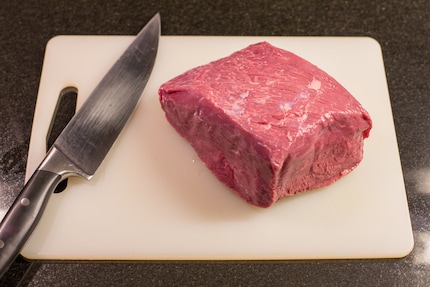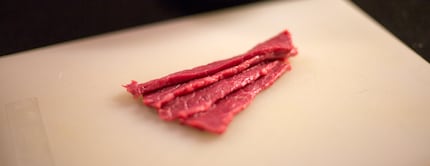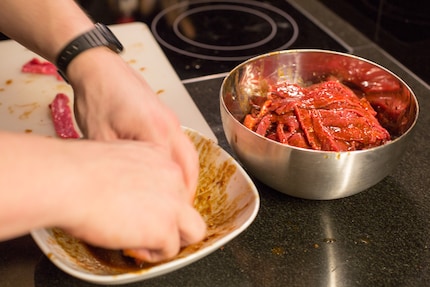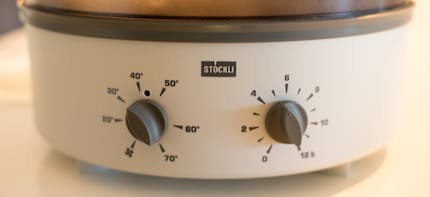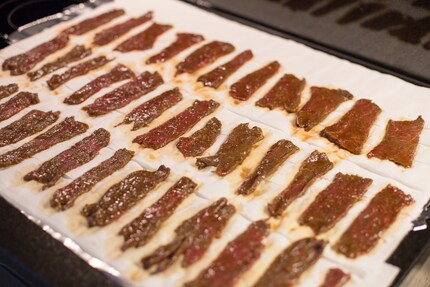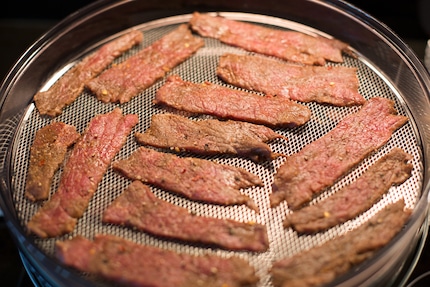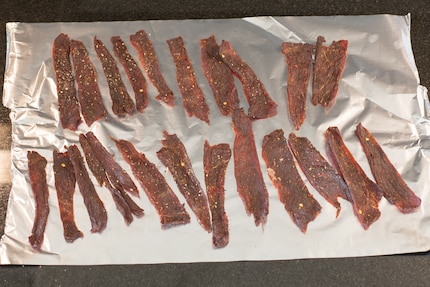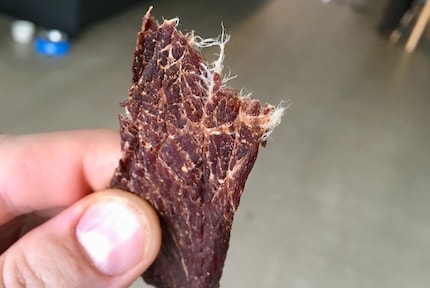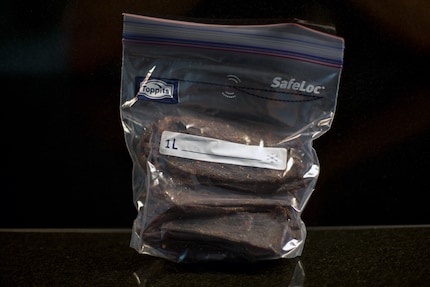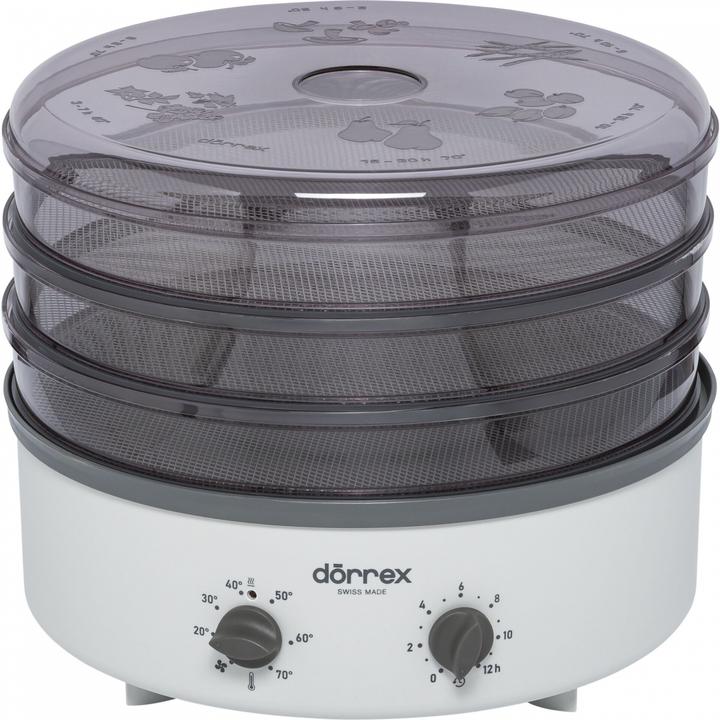
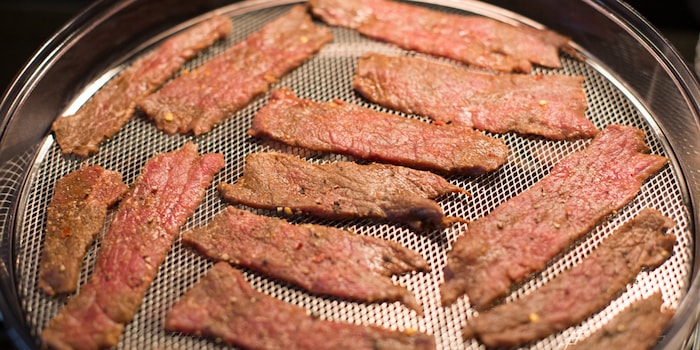
Homemade beef jerky. It's that easy!
Beef jerky is a wonderful source of protein and also tastes amazing. I'll show you how to make your own beef jerky and the steps you need to take to get the best results.
As the name suggests, beef is used for beef jerky. However, you can also make chicken jerky or salmon jerky by dehydrating chicken or salmon. Game is also ideal for this type of preservation. However, it is important to ensure that you use low-fat meat or cut away the fat before drying. As fat does not dry, the shelf life of the beef jerky is considerably shorter as a result.
Cut into strips and marinate
After you have cut the meat, it's time for the marinade. You can let your imagination run wild with the marinade and try anything you like. For my first attempt, I chose a fairly simple version that I knew would taste good. I used the following ingredients for one kilogram of beef:
- 8 tbsp soy sauce
- 8 tbsp Worcestershire sauce
- 2 tbsp ketchup
- ½ tbsp pepper
- ½ tbsp garlic granules
- ½ tbsp onion granules
I actually wanted to add a liquid smoke flavouring, but couldn't find it quickly. This would have given the beef jerky a pleasant smoky flavour
Once you have combined all the ingredients for the marinade, briefly coat each strip of meat and place it in a bowl or freezer bag. The marinated strips are then placed in the fridge. I left the meat to marinate overnight for about 12 hours. The longer you give this process time, the more intensely the meat will absorb the flavour of the marinade.
Drying in the dehydrator
To make my beef jerky, I used a dehydrator with a built-in temperature controller and timer. This appliance is actually more suitable for vegetables or herbs, but is also great for beef jerky. I opted for the slightly more expensive version with the timer as it means I don't have to leave anything to chance. There are also cheaper dehydrators without a timer, but you have to be present to switch it off in time.
At this point, I sprinkled a generous amount of pepper over the meat again. You have to press the peppercorns into the meat a little afterwards, otherwise they will fall off again as soon as they have dried.
As my strips are unfortunately not all exactly the same thickness, I check their consistency bit by bit. The beef jerky is ready when slight cracks form when the strips are bent, but the meat does not break. My thinnest strips were ready after just three and a half to four hours, whereas the thickest pieces had to spend up to six hours in the dehydrator.
The result is impressive
Another option is to vacuum seal the beef jerky. You can use a vacuum sealer to remove all the air and preserve the meat for much longer. Vacuum-sealed and stored in a dry and dark place, you can easily preserve the beef jerky for a year. However, once the airtight packaging has been opened, you should consume the meat within a week.
So, now off to the butcher, buy some meat and make your own. It's worth it and tastes great. En Guete!
I get paid to play with toys all day.
From the latest iPhone to the return of 80s fashion. The editorial team will help you make sense of it all.
Show all